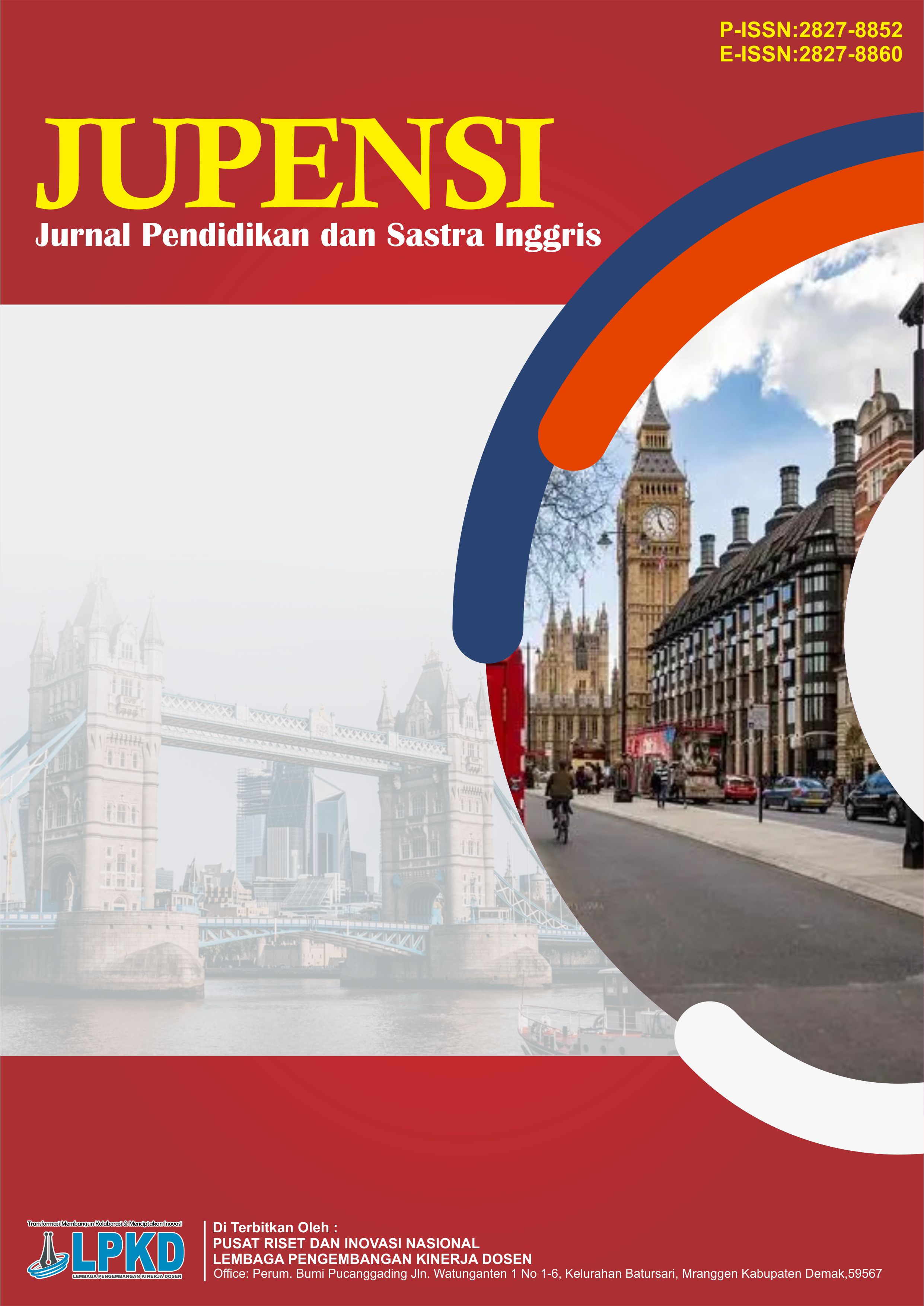Rhetorical Devices in Editorials of The Jakarta Post
DOI:
https://doi.org/10.55606/jupensi.v5i3.6039Keywords:
Editorials, Indonesia, Persuasive Strategies, Rhetorical Devices, The Jakarta PostAbstract
Editorials represent one of the most persuasive forms of journalistic writing, as they convey the institutional stance of a newspaper and aim to influence public opinion on social, political, and economic issues. This study investigates the rhetorical devices employed in the editorials of The Jakarta Post, the leading English-language newspaper in Indonesia. Specifically, the study seeks to identify the types of rhetorical devices used, examine their frequency, and analyze their persuasive functions. Using a qualitative content analysis approach, fifteen editorials published between January and June 2024 were purposively selected as the data source. The editorials were analyzed to identify rhetorical devices such as metaphor, rhetorical question, repetition, parallelism, hyperbole, irony, and antithesis. Each occurrence was categorized, quantified, and interpreted in light of rhetorical theory, particularly Aristotle’s appeals of ethos, pathos, and logos. The findings reveal that metaphor and rhetorical question were the most dominant devices, followed by repetition and parallelism, while hyperbole, irony, and antithesis appeared less frequently. These devices functioned not only as stylistic elements but also as persuasive strategies to simplify complex issues, engage readers, and reinforce the newspaper’s arguments. The study concludes that rhetorical devices play a vital role in enhancing the persuasive power of The Jakarta Post’s editorials. The results contribute to the understanding of persuasive language in Indonesian media and suggest directions for further research on rhetorical practices in journalistic discourse.
Downloads
References
Ab Rashid, R., Rahman, S. B. A., & Yunus, K. (2017). Rhetorical devices in newspaper editorials: A comparative study. Pertanika Journal of Social Sciences & Humanities, 25(3), 1187-1204.
Al-Momani, K. (2020). Rhetorical strategies in Jordanian English newspaper editorials. Journal of Language and Politics, 19(2), 287-309. https://doi.org/10.1075/jlp.19038.alm
Ansary, H., & Babaii, E. (2021). Editorials as a genre of political discourse: A critical discourse analysis perspective. Journal of Pragmatics, 174, 25-36. https://doi.org/10.1016/j.pragma.2020.12.017
Berk, N. (2025). The impact of media framing in complex information environments. Journal of Communication Studies, 45(2), 123-139. https://doi.org/10.1080/10584609.2025.2456519
Charteris-Black, J. (2016). Politicians and rhetoric: The persuasive power of metaphor (2nd ed.). Palgrave Macmillan. https://doi.org/10.1057/9781137496277
Chilton, P. (2019). Language, persuasion, and ideology in discourse. Routledge. https://doi.org/10.4324/9780429030180
Fairclough, N. (2015). Language and power (3rd ed.). Routledge. https://doi.org/10.4324/9781315834368
Gill, A., & Whedbee, K. (2019). Rhetoric. In T. van Dijk (Ed.), Discourse studies (pp. 157-184). Sage. https://doi.org/10.4135/9781446221884.n6
Nurlaily, D. (2021). Ideological stance in The Jakarta Post's coverage of political issues. Indonesian Journal of Applied Linguistics, 11(1), 203-215. https://doi.org/10.17509/ijal.v11i1.34662
Raffini, D., Macori, A., Porcaro, L., Catarci, T., & Angelini, M. (2025). How persuasive could LLMs be? A first study combining linguistic-rhetorical analysis and user experiments. arXiv. https://arxiv.org/abs/2508.09614
Schreier, M. (2014). Qualitative content analysis. In U. Flick (Ed.), The SAGE handbook of qualitative data analysis (pp. 170-183). Sage. https://doi.org/10.4135/9781446282243.n12
Setyono, B. (2018). Critical reading of media texts: A study of Indonesian students. Journal of Asia TEFL, 15(3), 673-690. https://doi.org/10.18823/asiatefl.2018.15.3.5.673
Sharma, B. K. (2024). Newspaper editorial: Genre of rhetorical artifact. International Journal of English Studies and Literature, 3(1), 82-90. https://doi.org/10.2139/ssrn.381493920
Trosborg, A. (2018). Text typology and translation. John Benjamins. https://doi.org/10.1075/btl.26
van Dijk, T. A. (2018). Discourse and knowledge: A sociocognitive approach. Cambridge University Press. https://doi.org/10.1017/9781107295094
Downloads
Published
How to Cite
Issue
Section
License
Copyright (c) 2025 Jurnal Pendidikan dan Sastra Inggris

This work is licensed under a Creative Commons Attribution-ShareAlike 4.0 International License.









